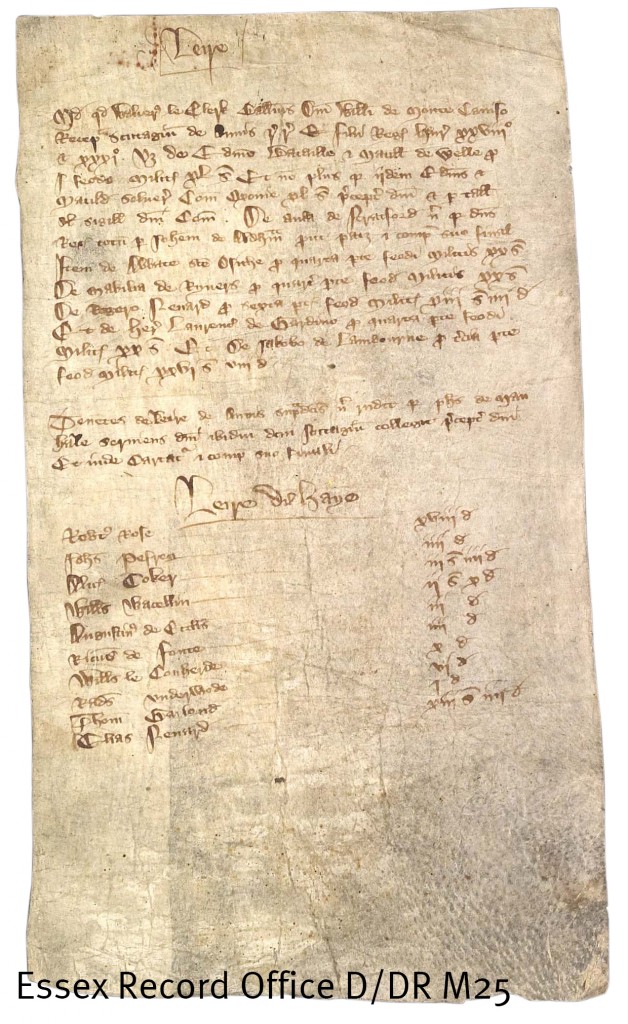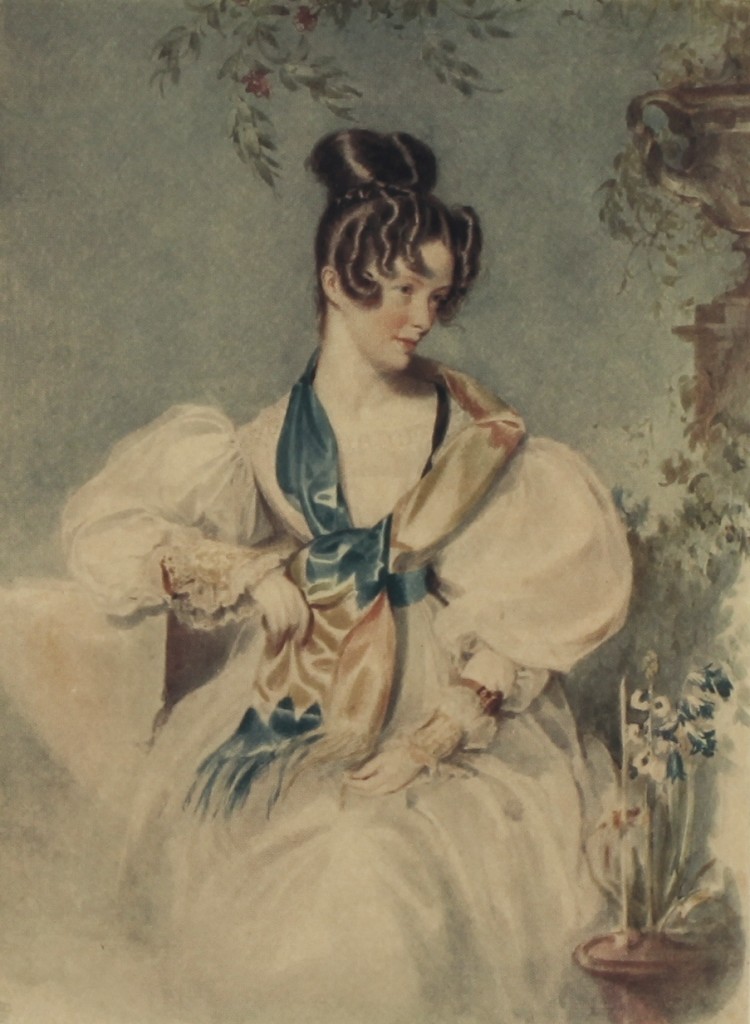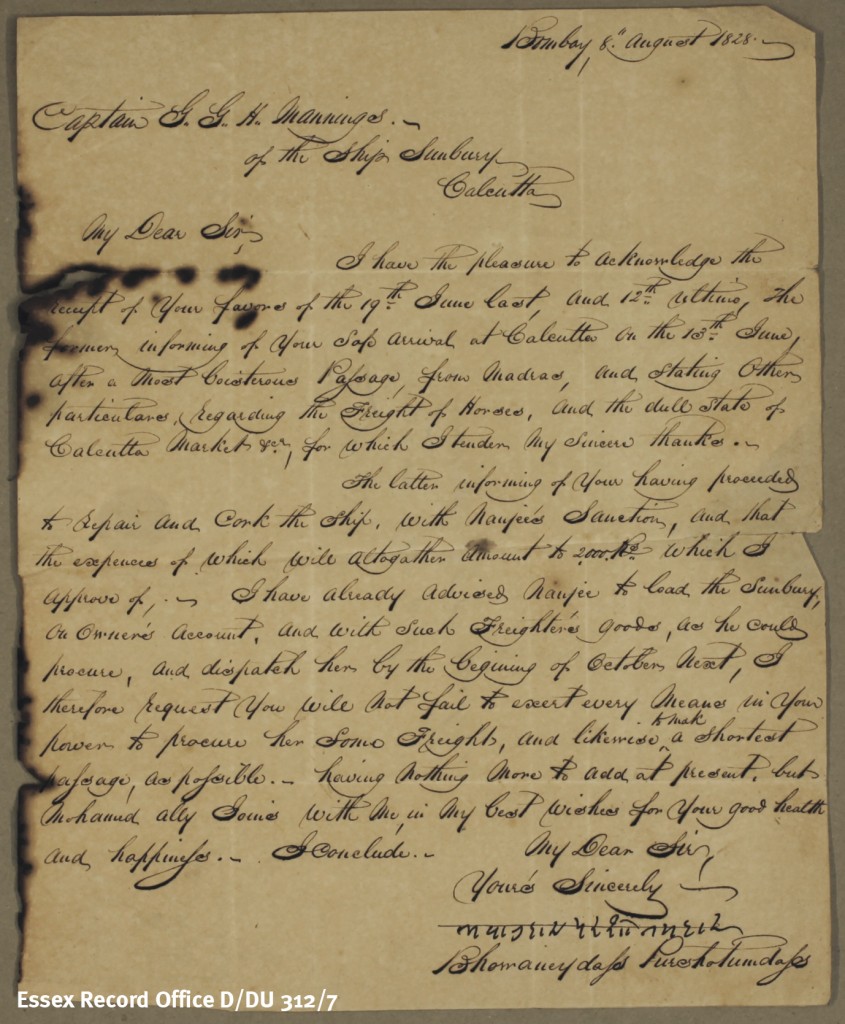下集纪念Agincourt战六百周年 Katharine Schofield调查一些文件,显示中世纪国王举军打百年战争深入了解Agincourt和EssexgentEssexAgincourt即2015年10月31日星期六一日会议联合事件Essex历史协会分支中所有细节都可查找来.
After the Norman Conquest society and most importantly land-holding was arranged on a feudal basis. William the Conqueror divided the English lands between his supporters, the tenants-in-chief named in the Domesday Book. They held their lands directly from the king in return for military service, generally considered to be a maximum of 40 days a year. In turn they rewarded their military supporters with land. This process called subinfeudation continued down through the landholding classes to the knight at the bottom. A knight's fee was sufficient land to support a single knight. This would include the knight, his family and servants, as well as providing him with the means to provide horses and armour to perform his military service.
When a knight died without a male heir his lands could be divided between heiresses (and their husbands). The knight's fee would be split into parts called moieties which owed fractions of a knight's service. Since it is difficult to provide a fraction of a knight (at least before a battle), it gradually became customary for payment of scutage (literally shield money) to be made in place of military service. In some cases a payment would be made because the land was too divided, in others the landowner might be too old or too young to fight. The money would then be used to hire mercenaries to fight in wars.

1240-1360图层de-la-Haye的切片卷(D/DRM25)
14世纪初封建制由国王和一位主之间的契约所取代,这些契约或战争契约协议由国王同意向主支付一笔钱,而主则必须提供固定数目人
协议分片写出两次并分行或缩写行(即名称),以便在出现争议时证明两部分曾并存过一次。王副本存入国库记录
Essex记录室内两位契约本会判给主生存都用英南法书写,中世纪拉丁语记录,法院使用,官方和法律文件使用,但法文本直到15线程上世纪和部分文档包括通信协议用法文写而不是用拉丁文写
早先的文件日期为1384年,是理查二世和同父异母Thomas Holland(D/DRG1/62)之间的协议,Earthl是城堡市长和瑟堡市长,并获4000英镑提供足够的卫士和大炮防守它。Earthl封印显示后方或白屏


Thomas Holland封印
The second (D/DL F15) is dated 8 February 1417 and is an agreement for Henry V's second campaign in France, following the siege of Harfleur and the Battle of Agincourt in 1415. This campaign was one of successful conquest resulting in the Treaty of Troyes which made Henry V heir to the French throne, and arranged his marriage to Catherine de Valois, daughter of Charles VI of France. It is an agreement made between the king and Sir Roger Fienes of Herstmonceux in Sussex. Sir Roger was to supply 10 men-at-arms and 30 archers, 20 of whom had to be mounted. The online medieval soldier databasewww.medievalsoldier.org列列士兵射手名 罗杰爵士视讯

Henry五世国王和Roger Fynes爵士1417年出游法国包括罗杰爵士服役期间负债的详细指令亨利五世第二次运动于1420年以特洛伊斯条约告终D/DLF15
契约具体说明所有条件,包括日工资支付-2罗杰爵士12D人手和6Dfor the archers. It also agreed further payment, depending on the length of the campaign, the division of prisoners (the ransoms would bring reward) and other prizes that might be gained from the campaign. Sir Roger was bound ‘to be with his said retinue well mounted armed and arrayed according to their estate at the port of the town of Southampton' on 1 May 1417. It is likely that a knight such as Sir Roger would have had at least six different types of horses, including a war-horse for battle as well as pack-horses to carry his equipment, the men-at-arms four and the mounted archers one. They would then be shipped overseas at the expense of the king.
Waging war in this way was an expensive business. The need to finance the campaigns of the Hundred Years' War meant that Edward III and his successors had to summon Parliament more frequently to grant taxes to pay for the war. The tax usually levied was called a fifteenth and tenth and was first introduced by King John and continued to the 17th century. This was levied on movable goods and was at the rate of one fifteenth for rural areas and one tenth for urban areas and royal land. In the 47th year of Edward III's reign (1373-1374), William Reyne, one of the bailiffs of the borough of Colchester proposed a means by which the burden of the tax on the burgesses could be reduced. All men, both burgesses and ‘foreigners' [forinceci] (from outside the town) would pay the tenth. In addition all ‘foreigners' outside the borough who traded within the town would also be assessed to pay the tenth, instead of the rural rate of the fifteenth. This forced people of fairly modest means such as farmers, dealers and fishermen to pay at a higher rate than they might otherwise have expected. It was obviously successful as they chose to use the same method the following year.
In addition the king also had the right of purveyance, which derived from feudalism. This was the right to requisition goods and services for royal use, and was particularly used to feed and supply armies and garrisons. It was a system that was open to abuse by the royal officers and was unpopular. Both Edward III and Henry V used purveyance to equip their armies for France. Despite these taxes, the kings had to turn to moneylenders, including Italian bankers, for extra finance. In 1338 wool was shipped from Harwich to pay the Bardi (Florentine) financiers who had lent the king money.
2015年10月31日加入我们EssexAgincourt日内所有细节都齐全来.









